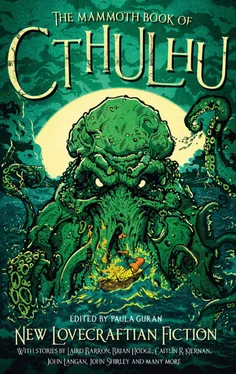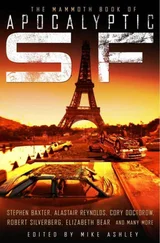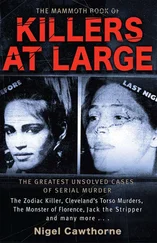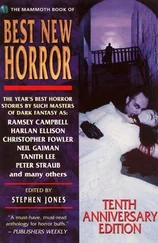– “The Rats in the Walls,” H. P. Lovecraft
H. P. Lovecraft was born on 20 August 1890 in Providence, Rhode Island, and he considered himself the very model of a genteel American. Perhaps in this he was correct. On his mother’s side, his ancestry can be traced back to John Field, one of the signatories of the Providence Covenant in the first half of the seventeenth century. Field could not actually sign, but made an X.
Like many of his characters, Lovecraft was pre-occupied with his lineage and his ancestors, many times stating his preference for the eighteenth century over the degenerate age in which he found himself.
Ah, eighteenth-century America, what wert thou?
For Lovecraft? The eighteenth century he adored was metered rhyme, neo-classical architecture, Enlightenment values of restraint and balance in all things.
But what if we were to dig more deeply into Providence’s eighteenth century, ducking below the surface of self-presentation, of self-professed values?
Rhode Island had been one corner of the Atlantic Triangle trade, perhaps better known as the Atlantic slave trade. Despite a 1652 law banning slavery in the state, apparently never enforced, there were more slaves per capita in Rhode Island than in any other state in New England. Of the 600,000 Africans who were forcibly brought to North America, about 100,000 were carried in Rhode Island ships, and the state was responsible for half of all United States slave voyages.
In Rhode Island’s corner of the triangle trade, molasses, produced in the West Indies with slave labor, and transformed into rum, which was then sent to West Africa and used to buy more slaves, who were then taken to the West Indies, where they were bought and forced to grow more sugar cane, which was turned into molasses and sent north to Rhode Island.
West Indies sugar plantations were particularly brutal places, where it was cheaper to work black people to death and then buy new slaves than it was to maintain slaves’ lives even in the meager and appalling way done in other contexts.
Rhode Island rum was made from the sweat and lifeblood of black men, women, and children, all being deliberately murdered, faster or slower, but no less certainly. Distillation can effect marvelous transformations indeed.
I am Providence, Lovecraft wrote.
What is Providence, then, but the gothic house, built on the bones of the Wampanoag, the Narragansett, and the Niantic people killed by European disease and European settlers?
So. Consider this fable, then. We can call it “The Horror Beneath Providence.”
This house — its occupants liked to speak and act as if it was as old as the bones of the Earth on which it rested, but this was only a charade. True, every surface had been lovingly distressed, genealogies carefully traced, distinctions painstakingly made between old money and new, old families and outsiders. But it was all only a show; nothing was truly old. Even the dust had been lovingly placed, particle by particle, to create the illusion of undisturbed stillness, stultifying tradition, utter respectability. In reality, nothing, not the dust, not the money, not the families, and certainly not the house, could claim a tenure of longer than a couple hundred years.
And no matter how much dust was laid down, how many rooms were constructed, how much furniture distressed, this house could never be older than that.
Into this house was born a child who loved it so much that for most of his life he rarely left it. And he believed even more completely and fervently than most of his generation in the illusion of age that his forebears had worked so steadily to cultivate. He felt himself older than his years would grant him and spent his happiest days rummaging in the very “oldest” cellars and basement, caressing the supposed antiquities he found there, studying the manuscript histories of this home, and working back through the plans and blueprints.
It was when he found the recipe used for dyeing the mortar holding the house’s bricks in place that the child, now a youth, quirked an eyebrow. For, from what he could read in the self-consciously antique script, the mortar in its natural state was the deep red of spilled blood.
He spent yet further afternoons in the cellars, spelunking in tunnels behind barred doors and chained gates. And during these expeditions, he began to hear sounds, faintly at first, the aural equivalent of a breeze so gentle that it cannot stir even a leaf. Just whispers. Not screams. Not yet.
As he wound his way deeper into the cellars, the sounds got louder. Nasty sounds. Cruel Sounds.
The youth stuffed his ears with cotton and pressed on.
But the cotton served only to keep the sounds inside his head, where they echoed and reverberated, and soon, all that was left in his head were the sounds, suffusing every squamous cell of this brain. And the sounds inhabited every thought he had, even the tears in his eyes, so he saw the world through their haze.
And that world became narrower and narrower, even while the youth believed in the expansiveness of his vision, thought he saw himself as an infinitesimal speck in a cold and infinite cosmos, even while he proclaimed himself lord of all he surveyed, and cast a contemptuous eye over all other models of humanity as weaker, lesser, cruder, worse.
They found him, eventually, the search parties. They were not looking for him in particular, but they found him nonetheless. Their peregrinations were the purposeful journeys of detectives re-examining cold cases, recognizing as murders deaths long dismissed as in the inevitable course of nature.
And they found the youth, now ossified into middle age. He was sitting on a throne built of human bone, his feet propped upon the dying. Blood ran down his face, out of his mouth, and onto his hands as he raved and gibbered, proclaiming himself the pinnacle of humanity and evolution, the society from which he sprang the acme of civilization.
Around him the flies buzzed and maggots crawled.
“As for New York — there is no question but that its overwhelming Semitism has totally removed it from the American stream. Regarding its influence on literary and dramatic expression — it is not so much that the country is flooded with Jewish authors, as that Jewish publishers determine just which of our Aryan writers shall achieve print and position . . . Taste is insidiously moulded along non-Aryan lines — so that, no matter how intrinsically good the resulting body of literature may be, it is a special, rootless literature which does not represent us.”
– H. P. Lovecraft, 1933
I write and publish about Jews. Most of my protagonists, unless otherwise specified, are Ashkenazi Jews. Well, why should the goyim have all the fantastic, the speculative, the future imperfect? My editors have mostly been Jewish, too.
Are my sensibilities out of touch with those of true Americans?
I suppose so. Certainly John Rocker of the Cleveland Indians thought so when he told Sports Illustrated : “Imagine having to take the 7 Train to the ballpark looking like you’re riding through Beirut next to some kid with purple hair, next to some queer with AIDS, right next to some dude who just got out of jail for the fourth time, right next to some twenty-year-old mom with four kids. It’s depressing . . . The biggest thing I don’t like about New York are the foreigners. You can walk an entire block in Times Square and not hear anybody speaking English. Asians and Koreans and Vietnamese and Indians and Russians and Spanish people and everything up there. How the hell did they get in this country?”
I used to live on the 7 line; I used to have purple hair. I don’t have AIDS, but I’ve known plenty of queers who do. And when I used to live in Philly I’d go entire days without hearing anybody speaking anything but English, and I found it depressing.
Читать дальше












